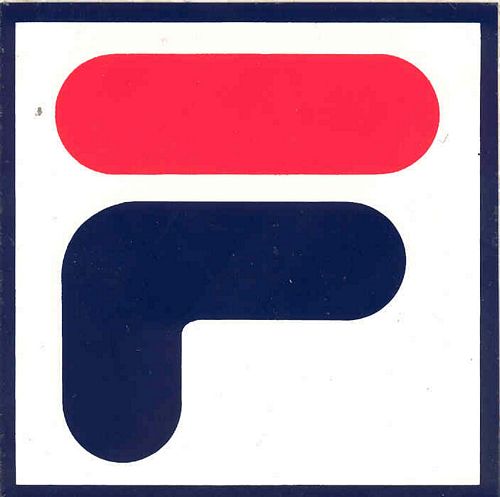
OVERVIEW
In 1997 the French Connection Group PLC embarked on a rebranding of its flagship French Connection line of clothing, which was sold in both department stores and stand-alone company stores throughout the world. The company’s agency, TBWA\London, used an internal company moniker, FCUK (French Connection United Kingdom), as the conceptual basis for a newly brash brand image. Featured on product labels, storefronts, and in advertising that overtly encouraged the subliminal rearrangement of the acronym, the letters FCUK proved an immensely successful marketing device. The brand name was exported to North America in 1998, and subsequent advertising campaigns used the near-obscenity to incite predictable and, for French Connection, lucrative controversies. A 2003 print and promotional campaign on behalf of a line of FCUK fragrances, however, was bolder than previous FCUK campaigns, and it met with more mixed results.
The 2003 campaign, called ‘‘Scent to Bed,’’ leveraged a projected $10 million budget to introduce American teens and young adults to the fragrances FCUK Him and FCUK Her. The obvious implications of the tagline and product name were bolstered by an image, in print ads, of an attractive, nearly nude couple in an intimate bedroom situation. The ads ran in men’s and women’s fashion magazines as well as in teen magazines. Planned promotional tie-ins included in-store handouts labeled ‘‘License to FCUK,’’ which touted a ‘‘Scent to Bed’’ website.
French Connection was not, however, able to mobilize the campaign’s full budget or promotional capacities. Widespread protests by religious and concerned-citizens’ groups led the country’s largest department-store company—Federated, the owner of Macy’s, Bloomingdale’s, and Goldsmith’s—to remove all FCUK products from its inventories, and the ‘‘Scent to Bed’’ ads were pulled from the teen magazines in which they had been placed. Though French Connection reported strong sales of the FCUK fragrances, the marketing campaign was put on hold. The company’s next American advertising campaign did not use the FCUK acronym at all.
HISTORICAL CONTEXT
Stephen Marks worked in the British fashion industry in the 1960s before starting his own company in 1972.
Named after Marks’s favorite movie, French Connection established itself as a British wholesaler of midpriced, upscale, casual clothing aimed at a fashionconscious target market consisting primarily of teens and young adults. The French Connection brand expanded to continental European, Asian, and North American markets. Marks took the company public in 1984. In the 1990s French Connection shifted its emphasis from wholesale to retail operations; the company undertook a corresponding broadening of its product offerings and renovation of its stores’ appearance. The retail fashion market was highly competitive and fragmented, however, and French Connection needed a clearer market positioning. In 1997 founder Marks enlisted TBWA\London’s Trevor Beattie, a creative director who had achieved fame in the advertising industry for creating an overtly provocative (and very successful) campaign for Wonderbra, to helm a rebranding of French Connection. Beattie decided that the company needed to promote an image of irreverent hipness in keeping with its core target market, but he had not settled on any unifying icon for the rebranding project when, while at French Connection headquarters, he noticed the letters ‘‘FCUK’’ in a company fax header. The letters stood for ‘‘French Connection United Kingdom’’ and were used in communications with the company’s Hong Kong office (FCHK), but Beattie immediately saw the brand-building potential of the nearobscenity. French Connection was rebranded as FCUK, a move that generated extensive controversy while fueling unprecedented company growth. Outdoor advertisements in London, tagged ‘‘FCUK fashion,’’ were outlawed by Britain’s Advertising Standards Authority after widespread outrage; the company responded with ads whose tagline, ‘‘FCUK advertising,’’ did little to quell citizens’ complaints.
In 1998 the FCUK logo began appearing in the United States, on T-shirts and on the company’s U.S. storefronts. Print ads explicitly encouraged the logo’s subliminal associations, using transposed language such as ‘‘night all long’’ and ‘‘I you want.’’ An outdoor campaign that ran on top of New York City taxicabs paired the brand name with the tag ‘‘Think your clothes off ’’; it was pulled after only a few days. Another New York print and taxi-top campaign followed, using copy that stated, ‘‘Brave but not free / FCUK censorship.’’
TARGET MARKET
The primary target for the FCUK Her and FCUK Him fragrance lines was 18- to 25-year-olds, but FCUK also placed ‘‘Scent to Bed’’ advertisements in publications primarily read by much younger teenage girls. Given the ubiquity of sexual imagery in the media at the time, sexual appeals to young people had to be extremely explicit or daring to stand out. FCUK’s ability to make a splash in a hypersexual environment was primarily a function of its products’ brand name, which, in combination with the clear sexual implications of the ad imagery and the ‘‘Scent to Bed’’ tagline, amounted to one of the bluntest sexual appeals in recent mainstream U.S. advertising.
Given FCUK’s history of courting controversy as a means of spurring sales, industry observers took it for granted that the company welcomed the inevitable public uproar surrounding the fragrances’ launch. As religious and concerned-citizens’ groups began to mount predictable protests, Michael Wood, vice president of the media consultancy Teenage Research Unlimited, told USA Today, ‘‘The more people say, ‘How dare them,’ the more interest they get from the teen market.’’ Other analysts pointed out a potential pitfall of this approach: teens were dependent on their parents for the money required to make most of their purchases.
COMPETITION
The American fashion-industry standard for sexually explicit marketing had arguably been established by Abercrombie & Fitch (A & F) in the late 1990s and early 2000s. Indeed, one of the most prominent groups protesting the ‘‘Scent to Bed’’ campaign, Concerned Women for America, described the FCUK campaign as ‘‘Abercrombie & Fitch on Viagra.’’ Despite the suggestion that A & F’s marketing was tame by comparison, the popular retailer of clothing for college-age young adults had become one of the most roundly protested advertisers of the time, regularly provoking the ire of concerned citizens across the political spectrum. Most of this outrage centered on the company’s signature ‘‘magalog’’ (a hybrid of magazine and mail-order catalog), the ‘‘A & F Quarterly,’’ which integrated racy editorial content with art-quality photos of nearly nude young men and women. An early issue of the magalog ran a widely condemned feature called ‘‘Drinking 101,’’ which encouraged college students to ‘‘drink creatively’’ and provided recipes for such cocktails as the ‘‘Brain Hemorrhage.’’ Another notorious issue, from the 1999 holiday season, featured a cover image that included a male model’s pubic hair as well as an image of Santa and Mrs. Claus engaging in sadomasochistic sex acts. A 2003 Christmas issue touting ‘‘group sex and more’’ generated a last round of outrage but proved the last installment of the publication; it was retired amid ongoing controversy and, perhaps more to the point, flagging in-store sales. American Apparel, an upstart wholesaler of highquality T-shirts and other basic knitwear, was responsible for another prominent advertising campaigns that flirted with pornography. The American Apparel print and outdoor campaign, introduced to coincide with the opening of the brand’s first retail outlets in late 2003, was largely masterminded and executed by the company’s founder, Dov Charney. It featured overtly sexual, casual snapshots of employees and other nonprofessional models. Balancing this pronounced appeal to sexual appetites with a sweatshop-free corporate model, American Apparel successfully targeted young, fashion-conscious urban progressives. Regularly outpacing the garment industry in yearly sales, American Apparel grew rapidly, expanding its stable of retail stores from two to more than 50 during the first two years of the campaign’s run.
MARKETING STRATEGY
FCUK Him and FCUK Her were the company’s first global fragrance products, and they became available worldwide in French Connection stores and department stores starting with a September 2003 launch in the United States. The ‘‘Scent to Bed’’ print and promotional campaign, developed by TBWA\London (FCUK’s agency of record since the 1997 rebranding), was a U.S.-specific element of the global push that was timed to coincide with the fragrances’ introduction. The projected campaign budget at the start of the campaign was $10 million.
Print ads ran in magazines that included
Cosmopolitan, Marie Claire, Maxim, and FHM as well as in the magazines Seventeen and Teen People, whose readerships consisted primarily of girls in their early and middle teenage years. The ‘‘Scent to Bed’’ tagline was superimposed over an attractive young couple in an intimate bedroom situation. This combination of imagery and text, supported by the subliminal reading of the accompanying brand name, sent an unmistakable sexual message to young people. Many assumed, judging from FCUK’s history of parlaying controversy into sales gains, that the company was hoping for some amount of buzz-generating backlash. The company itself remained coy about its strategies. ‘‘Whether it shocks you or amuses you,’’ Andrea Hyde, president of French Connection Holdings, told USA Today, ‘‘FCUK certainly makes the consumer think.’’
Promotional elements of the campaign included invitations to a FCUK fragrance launch party that were shaped like ‘‘do not disturb’’ signs for hotel doorknobs and that read, ‘‘FCUK in progress.’’ At the time of the campaign’s September release, plans were in place for a holiday promotion involving ‘‘License to FCUK’’ cards to be distributed by stores that carried the fragrance. The cards were to include a code to be used at a ‘‘Scent to Bed’’ website, allowing consumers access to a list of effective pickup lines and the chance to win a free sixperson Club Med vacation.
OUTCOME
A ‘‘Scent to Bed’’ backlash gained steam immediately upon the FCUK fragrances’ American introduction. ‘‘It’s very disgusting and highly offensive,’’ Roberta Combs, president of the Christian Coalition of America, told USA Today. ‘‘It’s a sad day when people have to do this type of advertising, especially toward our youth.’’ The American Family Association initiated a large-scale E-mail and phone drive to file complaints with participating department-store chains, and French Connection began experiencing trouble with the department stores that carried the FCUK brand. In the first two weeks after the fragrances were introduced, they ranked no lower than eighth among top-selling fragrances at Sephora stores and no lower than fourth at Bloomingdale’s. The controversy soon began to affect stores, however. The department store Kaufmann’s ceased using in-store ‘‘Scent to Bed’’ displays, while the largest department-store corporation in America, Federated Department Stores—which owned Macy’s, Bloomingdale’s, and Goldsmith’s, among others—pulled not just the FCUK fragrances but all FCUK-labeled products from its stores within a month after the campaign’s launch. In October 2003 the magazines Seventeen and Teen People both announced that they would no longer run FCUK ads, and French Connection discontinued the campaign.
The fragrances remained available in French Connection stand-alone stores and sold well. According to Zirh International, the company that manufactured the fragrances for French Connection, the launch exceeded sales expectations as well as production capacities. Unused portions of the campaign budget were redirected to in-store initiatives and to other international markets. In November the company submitted to a relabeling of its products as ‘‘French Connection United Kingdom’’ in an attempt to get them back on Federated Department Stores shelves. The advertising campaign on behalf of the fragrances remained on hold indefinitely. According to Advertising Age, chairman and CEO Marks remained convinced that the campaign was right for its target market. French Connection’s North American sales continued to grow, reaching $84 million for 2003, more than double the company’s sales figures for 1997. After a separate 2004 controversy in Great Britain resulted in an order by the Advertising Standards Authority that all FCUK outdoor advertising be preinspected, French Connection temporarily discontinued the use of its notorious acronym. A 2004 U.S. campaign featuring TV, print, and outdoor components used models posing as bikers in the American desert. The campaign’s copy included, ‘‘Something beginning with F,’’ and ‘‘Don’t make us say it.’’ ‘‘We think it’s revolutionary,’’ Marks told Women’s Wear Daily. ‘‘Who else would advertise without using their name?’’








